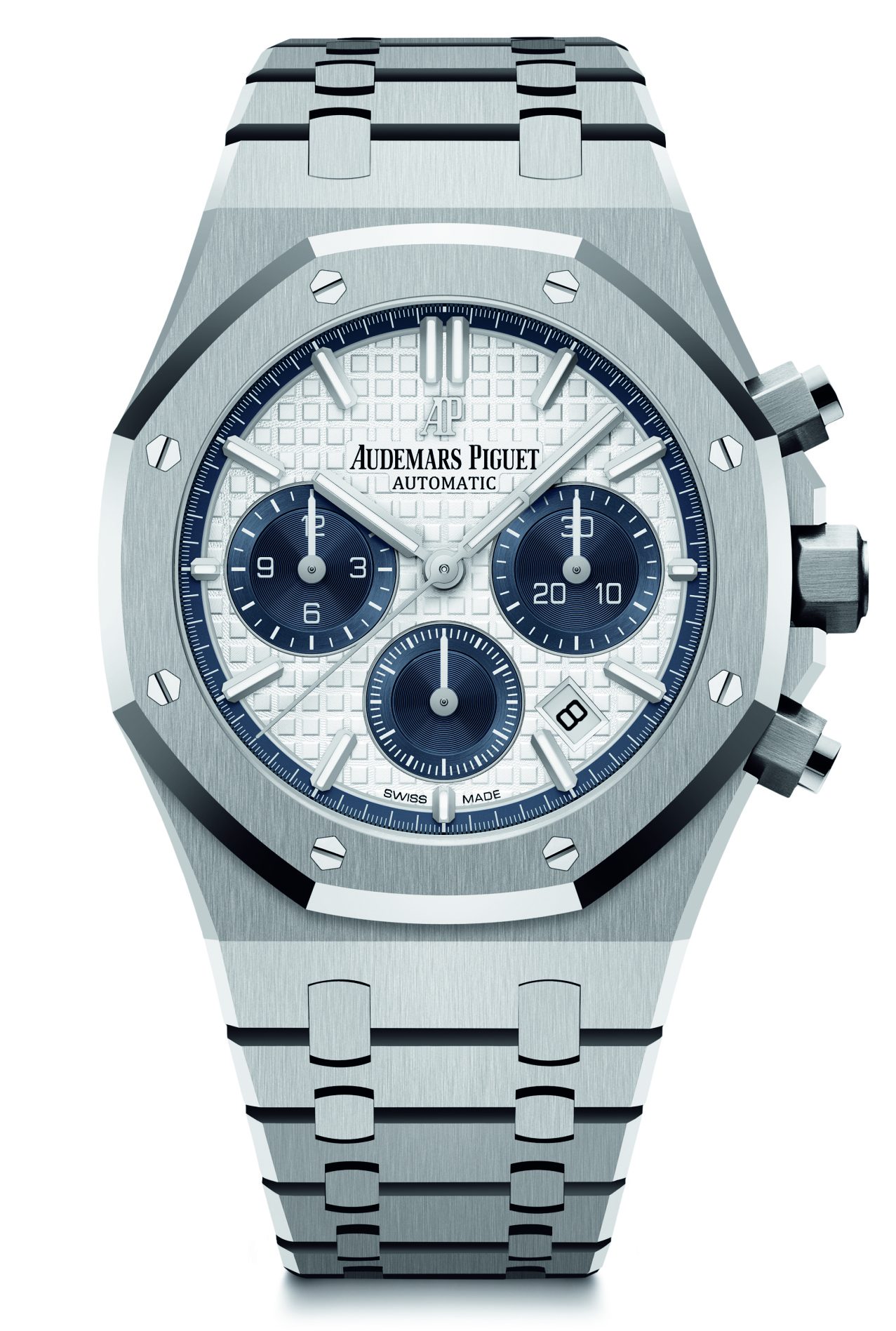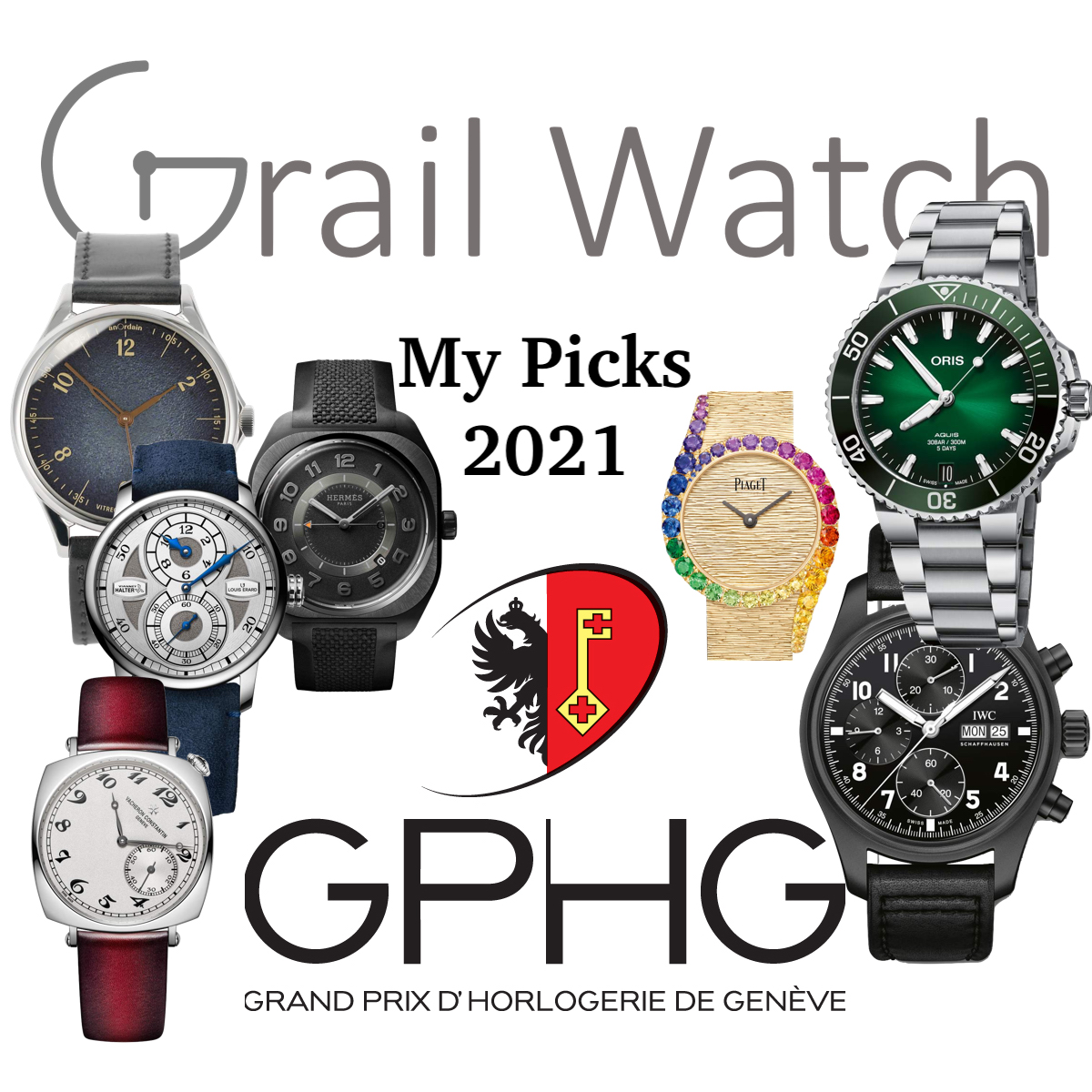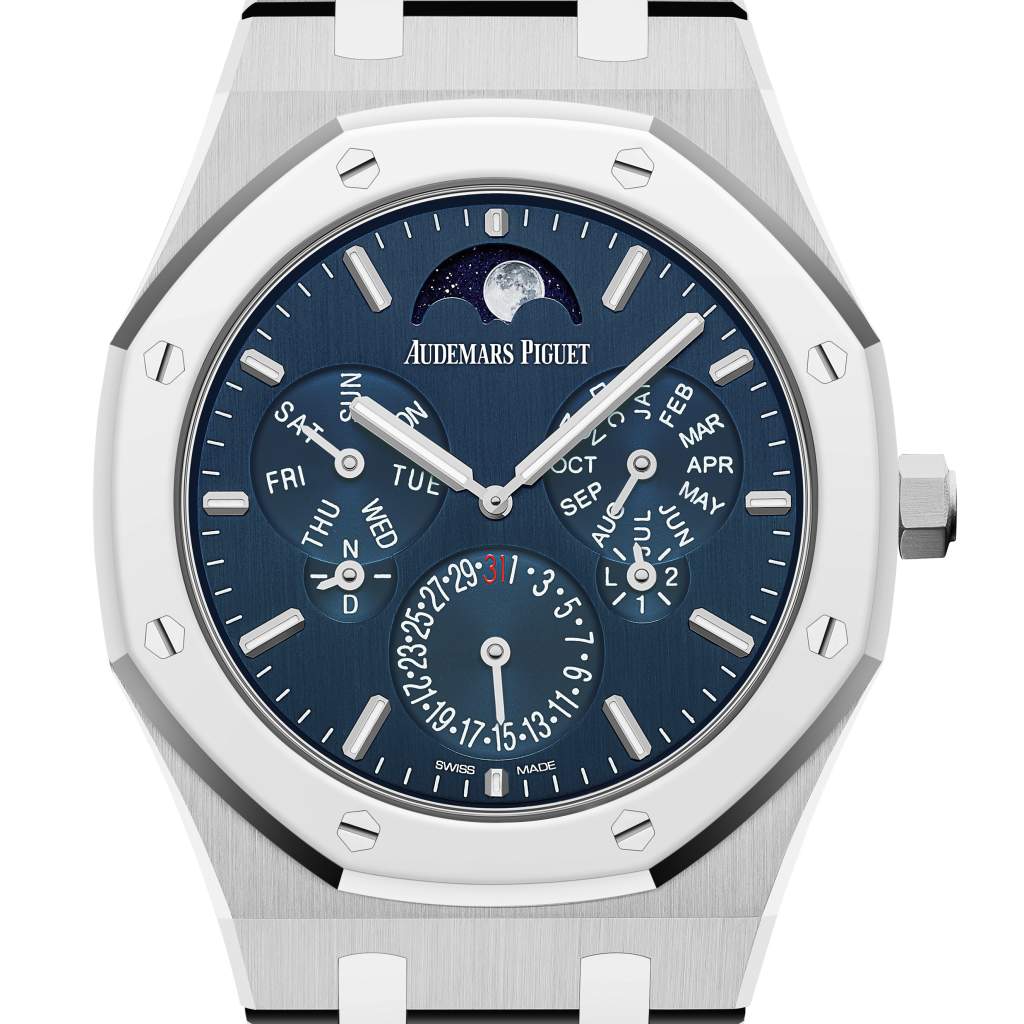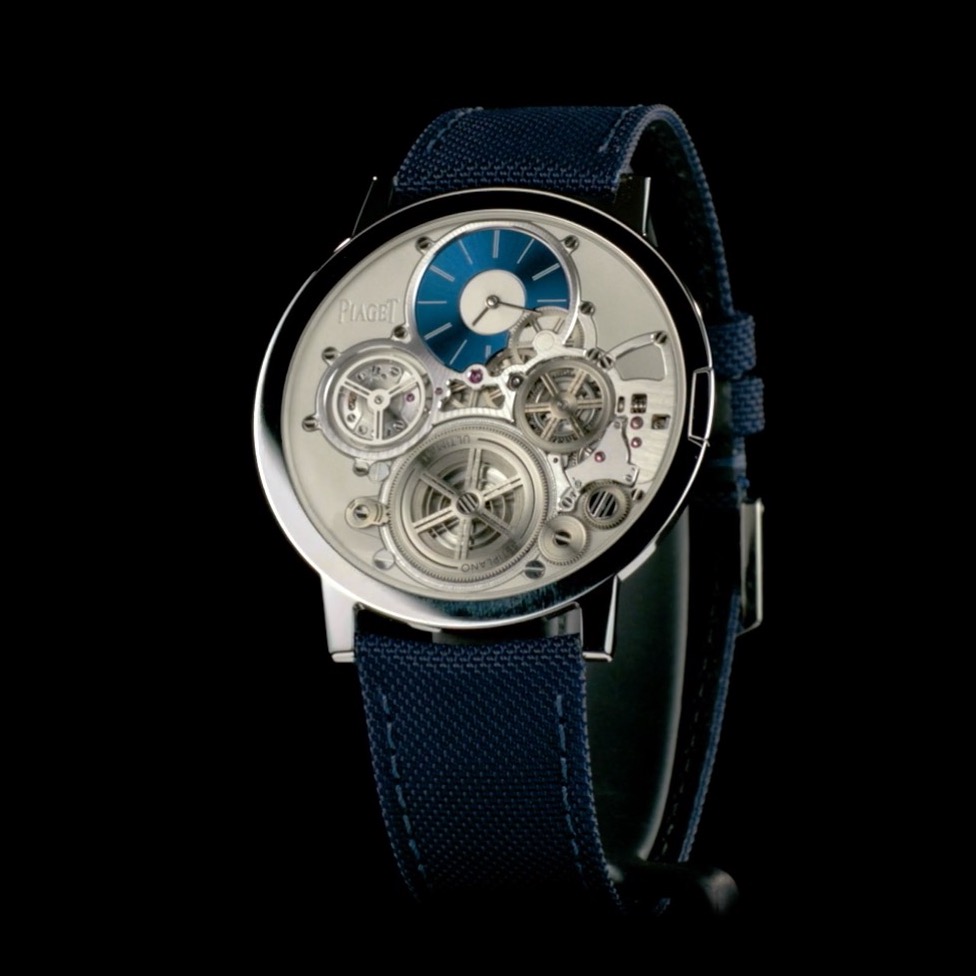The annual Grand Prix d’Horlogerie de Genève ceremony took place on Thursday night, and it was a night of surprises. Watching the awards from afar, it sometimes seems that the ceremony celebrates the achievements of a decade past if not for a few true horological revelations. This year the jury trumped the fixed categories, and, as always, the overlooked nominations can be maddening. Still, the GPHG remains the gold standard for watch awards, driving sales and press like no other. Here’s the Grail Watch take on the 2023 GPHG winners and losers!

The Biggest Surprise: No Awards!
Certainly the biggest surprise of the night was the decision to skip two of the categories, even as all of the discretionary prizes were awarded. For 2023, there no Men’s Watch or Mechanical Exception Watch prize was awarded, as two of the six nominated watches in each were given discretionary prizes. Although I certainly appreciate the exceptional awards, and the watches that received them, it seems odd to skip the one category (Men’s Watches) that represents most of the sales volume in the industry!

The nominations in the Men’s Watch category included three incredible watches worth a win and three more that might as well have been nominated in years past. The Ferdinand Berthoud Chronomètre FB 3SPC is an astonishing achievement, the first COSC-certified wristwatch chronometer with a cylindrical hairspring. Inspired by the namesake pocket watches of its founder, I was thrilled to see the Berthoud receive the discretionary Chronometry prize. Similarly, the incredible finishing of the Simon Brette Chronomètre Artisans shows that his young brand is well deserving of the “Horological Revelation” prize. Given the choice, I would have awarded the Men’s Watch prize to Xhevdet Rexhepi’s fine debut, Minute Inerte.

The Mechanical Exception category is something of a puzzler every year. It includes “watches featuring a special mechanism, such as an innovative or sophisticated display, an automaton, a striking or any other acoustic function, a special escapement, a belt-driven movement or comprising another original and/or exceptional horological concept.” So it functions as a “feeder category” for the Innovation Prize, Chronometry Prize, and of course the “Aiguille d’Or” Grand Prix. So it was this year with Hautlance Sphere Series 1 winning the Innovation Prize and the tour-de-force Audemars Piguet Code 11.59 Ultra-Complication Universelle claiming the top award. This left two dual-escapement watches (Czapek and Rudis Sylva), a clever automaton from Louis Vuitton, and the very-nifty and surprisingly nerdy Jacob & Co. Astronomia Revolution. The latter is an homage to the James Webb space telescope and features a revolving movement over the gold mirrors. It would have had my vote, as long as the Code 11.59 and Hautlance were recognized elsewhere. And we truly live in a world of decadence when two phenomenal double-escapement watches are “ho hum!”
Watches You Might Actually Buy
One important change this year is that the Diver’s Watch category reverted to the old Sports Watch name. Established way back in 2003, the Sports Watch prize went to numerous “bread and butter” top-selling watches over the last two decades from companies like Panerai, TAG Heuer, Zenith, and Seiko. It was odd to focus it only on diver’s watches in 2019, though these do make up the bulk of sports watches, and I applaud the reversion to form.

This year continued Tudor’s attack on the GPHG, with the lovely and affordable titanium Pelagos 39 taking the Sports Watch crown. Although I appreciate this choice, my heart was on the side of Doxa and their retro DOXA Army entry. Chopard’s entry in the still-booming steel cushion-and-bracelet category, the Alpine Eagle Cadence 8HF, really deserves an award as well. Not to mention the fantastic new IWC Ingenieur, which I will cry for later in this section. Still, the Tudor is a fine choice, and one I would not hesitate to recommend to any sports watch buyer.

It is refreshing that the Challenge Watch prize (introduced just six years ago) also went to a mass-market watch. I applaud the GPHG for reducing the price ceiling for this category from CHF 4,000 to just CHF 2,000 this year. The winning Raymond Weil Millésime Automatic Small Seconds is a perfectly fine watch at a good price, even though I question the decision of their copywriter to describe the small seconds sub-dial as “reminiscent of a compass.” But it was a paltry field of nominees this year, rounded out by a goofy Nomos, two GMT watches, and two newcomers that fall short of charming. I would have given the award to the Seiko 1968 even though it’s not a “true GMT” since it is the 24 hour hand that adjusts rather than primary 12-hour hand. And though I have been a fan of Hajima Asaoka’s Kurono Tokyo brand, and the GMT 1 adjusts the correct hand, the resulting watch just doesn’t look right to me and I can’t forgive the brand for using the term “worldtime” in the description.
The price band for the “Petite Aiguille” prize was also adjusted lower this year, now limited to 8,000 francs. Among a solid field of entries, the prize was well-earned by Christopher Ward London’s C1 Bel Canto “en passant” repeater. It’s a fantastic concept and incredibly well-executed but sadly as unobtainable as last year’s choice, the M.A.D. 1 Red. My second choice would have been the Habring2 Chrono-Felix Top-Second, with a “flashing” running time dot inside the “9” inspired by one of my forgotten-favorite brands, Mondia. Although I would not hesitate to recommend the Tudor Black Bay and Bulgari Octo Roma Automatic to buyers in this price range, neither is really deserving of an award at this point. The Raúl Pagès movement in Massena Lab’s entry is let down by their bland two-dimensional dial and the Chaykin/Erard collaboration looks more goofy than monstrous to me.

To sum up the 2023 winners that people might actually buy (and wear), we have perfectly-suitable watches from Tudor and Raymond Weil and a fantastic but unobtainable entry from Christopher Ward London. If you’re shopping, it’s worth taking a look at many of the other nominated watches as well, especially the Bulgari Octo Roma Automatic, Chopard Alpine Eagle, Doxa Army, Habring2 Chrono-Felix, IWC Ingenieur, and Seiko 1968.
Return of the (Too-Many) Icons

In 2013, the GPHG added a new category to celebrate the many new watches inspired by the history of the industry. The Revival Watch Prize name was perhaps a bit too on-the-nose, so the name was changed in 2019, becoming the Iconic Watch Prize. Given the fascination with historic reissues among both brands and buyers, it is no surprise that this category often sees the bloodiest battles, and I find myself truly crushed by this year’s competition.
I must start with one of my favorite watches of all time. After decades of mediocrity, IWC Schaffhausen has created a new Ingenieur that is truly worthy of the name. The Ingenieur Automatic 40 recalls Gérard Genta’s brilliant Ingenieur SL but updates every aspect for the modern buyer. Everything is new, yet it is instantly recognizable as a proper Ingenieur. I applaud that IWC broke from tradition by ensuring that the five bezel pips actually line up with the dial, adding nicely-integrated crown protectors, and making the bracelet more comfortable. I just wish that the new Ingenieur wasn’t so darn expensive! And I wish it won the Iconic Watch Prize this year.

Next we have another incredible update to a classic: The Audemars Piguet Royal Oak Offshore Selfwinding Chronograph. I recently wrote far too many words about the refreshed Offshore line for Europa Star (keep an eye out!) and developed a surprising (for me) crush on this exact model. It’s the perfect synthesis of modern materials and taste with everything that makes an Offshore great. Get the one with the textile strap and live your inner “90s Ahnold”. And since it’s an Offshore you might even be able to find one (but probably not…)
Breitling and TAG Heuer also brought us updated classics this year, in the form of the Navitimer B01 Chronograph 41 and Carrera Chronograph. Given the history of competition between these two companies, it’s only right to mention them together. And both watches have an incredible in-the-hand experience, with modern touches that emphasize the classic design. If I didn’t already have a Breitling Premier B09 I’d be awfully tempted by this new Navitimer. And this Carrera Chronograph is my favorite new TAG Heuer.

Given all this worthy competition (including Chopard’s homage to the original L.U.C), I’m not sure I would have cast my vote for the Ulysse Nardin Freak One. Yet it might just be more deserving than the others, since it features an updated iconic movement as well as overall design. Just like Ludwig Oechslin’s 2001 original, this new Freak One has no dial, no hands, and no crown. It’s a modern haute horology icon that’s just as radical in 2023 as it was in 2001. No previous Freak has taken home a GPHG statue despite debuting (though not being nominated) the first year of competition and being entered 8 times since. Call this a lifetime achievement award if you must, but the Freak One deserves the prize.
The Jury’s Discretion
One interesting aspect of the Grand Prix d’Horlogerie de Genève is that six of the prizes, including the overall Grand Prix, are selected from the field at the jury’s discretion. Since 2013, watches that win these awards are not eligible to win in their original category. This is the reason that two of the standard prizes went un-claimed this year: The best watches in those categories won bigger/better awards.
We already discussed the Innovation, Chronometry, and Horological Revelation prizes, which “robbed” the Mechanical Exception and Men’s Watch categories of their best entrants. This leaves the Audacity Prize and of course the top “Aiguille d’Or” Grand Prix, as well as the Special Jury Prize for people and institutions.

A new standard category was added in 2022 for Mechanical Clocks, one of the most exciting areas of horology these days. It’s hard not to love the whimsical and artistic creations of companies like L’Epée 1839, and they took the Mechanical Clocks prize for 2023 with their Time Fast II in Chrome. Although a wonderful and deserving piece, this is essentially the same clock they entered last year apart from the colorway. Van Cleef & Arpels won that inaugural award (which I would have given to Miki Eleta) while L’Epée took home the trophy this year. I quite liked Matthew Norman’s affordable Diaphane this year, but am happy to see the perennial masters at L’Epée take the award.

Still, it was hard to ignore the incredible story of the Maison Alcée Persée Azur. Created in part as a training tool to help watchmaking apprentices, this incredible clock is assembled by an apprentice at the watchmaking high school in Morteau, France under the guidance of Alcée Montfort. This incredible concept connects us all to the history of clock and watchmaking in the Jura region while inspiring the next generation. And it results in a perfectly lovely clock, well worthy of the Audacity Prize it received at the GPHG this year!
Finally we turn to the “Aiguille d’Or” Grand Prix. Selected from all entered categories, the history of this award truly speaks for itself. Although many worthy watches have been edged out, it was always by an even-better entrant. And it is impossible to argue with the 2023 selection, Audemars Piguet’s Code 11.59 Ultra-Complication Universelle RD#4. This is my favorite kind of watch: Haute horology in the finest sense of the word. It packs an amazing set of complications (and over 1100 components) into a contemporary and (theoretically) wearable wristwatch. It includes the “greatest hits” like a split seconds flyback chronograph, perpetual calendar, and Grande Sonnerie with a flying tourbillon exposed in the dial. But the most innovative element is visible from the back, where a spring-loaded (“secret”) caseback opens to reveal a full rotor for automatic winding. Seven years in the making, this 1.7 million franc watch is easily the watch of the year!


This article is getting quite long, and I overlooked many of the categories as my attention wandered. How could I forget to mention the incredible Artistic Crafts and Jewellery entries? Or that Grand Seiko’s first mechanical chronograph was snubbed in favor of Petermann Bédat’s jumping-minute split-seconds monopusher? I would have picked Felipe Pikullik’s Moon Phase 1 over Bovet 1822’s Récital 20 Astérium in the Calendar and Astronomy category, but I appreciate the choice of Laurent Ferrier’s understated Grand Sport Tourbillon Pursuit in a crowded Tourbillon category. The Men’s Complication category is the same, where I might have given the nod to Parmigiani Fleurier’s whisper-discrete Tonda PF Minute Rattrapante but share the jury’s love for Voutilainen’s World Timer. The Dior Montres Grand Soir Automate Etoile de Monsieur Dior is overly-cute, so I would have picked the Andersen Genève world timer on the Ladies’ Complication ballot but agree that Piaget’s Hidden Treasures is the winner in Ladies overall. But as I said, this article is getting long!

So let us turn to these two gentlemen. In 1984, Svend Andersen and Vincent Calabrese established the Académie horlogère des créateurs indépendants as a way to recognize and promote the growing cadre of elite watchmakers. This came just as mechanical (and complicated) watchmaking was re-establishing its place in the industry, and the AHCI grew to include such notables as George Daniels, François-Paul Journe, Christiaan van der Klaauw, Philippe Dufour, and Franck Muller in the first decade. The group sponsored shared booths at watch fairs and worked tirelessly behind the scenes to make independent watchmaking what it is today. Later additions include Vianney Halter, Peter Speake-Marin, Kari Voutilainen, Konstantin Chaykin, Greubel and Forsey, Hajime Asaoka, and the Baumgartner brothers. Although the only original members to remain are Andersen, Calabrese, and Bernhard Lederer, the group continues to grow, with the class of 2022 including Stefan Kudoke.
And the AHCI has been incredibly well-represented at the Grand Prix d’Horlogerie de Genève over the years. Taken as a group, AHCI watchmakers have claimed 35 trophies over the past two decades, making them the second-most winning “group” after Richemont! Of course Kari Voutilainen alone represents 10 of these, and F. P. Journe has 7, but that’s how it goes when you have so many talented friends! The AHCI itself won the Special Jury Prize in 2010, member Philippe Dufour won in 2013, and the George Daniels Educational Trust won in 2016. So it’s nice to see Andersen and Calabrese recognized personally for all they have done for independent watchmaking as well as their own personal creations. Given their own watchmaking activities, it is surprising that neither previously took a trophy alone. Andersen’s creations have been entered two dozen times, with two this year alone.
The Grail Watch Perspective: GPHG 2023
I pay close attention to the Grand Prix d’Horlogerie de Genève every year, and the 2023 event was full of surprises. Although I am often frustrated that my favorites don’t make the cut (or simply aren’t entered), the event never fails to open my eyes to new stories and artisans. Thanks to the 2023 GPHG I’ll be paying close attention to Simon Brette, Felipe Pikullik, Matthew Norman, and the wonderful Maison Alcée in the coming year. And I’ve gained newfound respect for the modern Doxa and Raymond Weil. Isn’t that what this is all about?






Leave a Reply